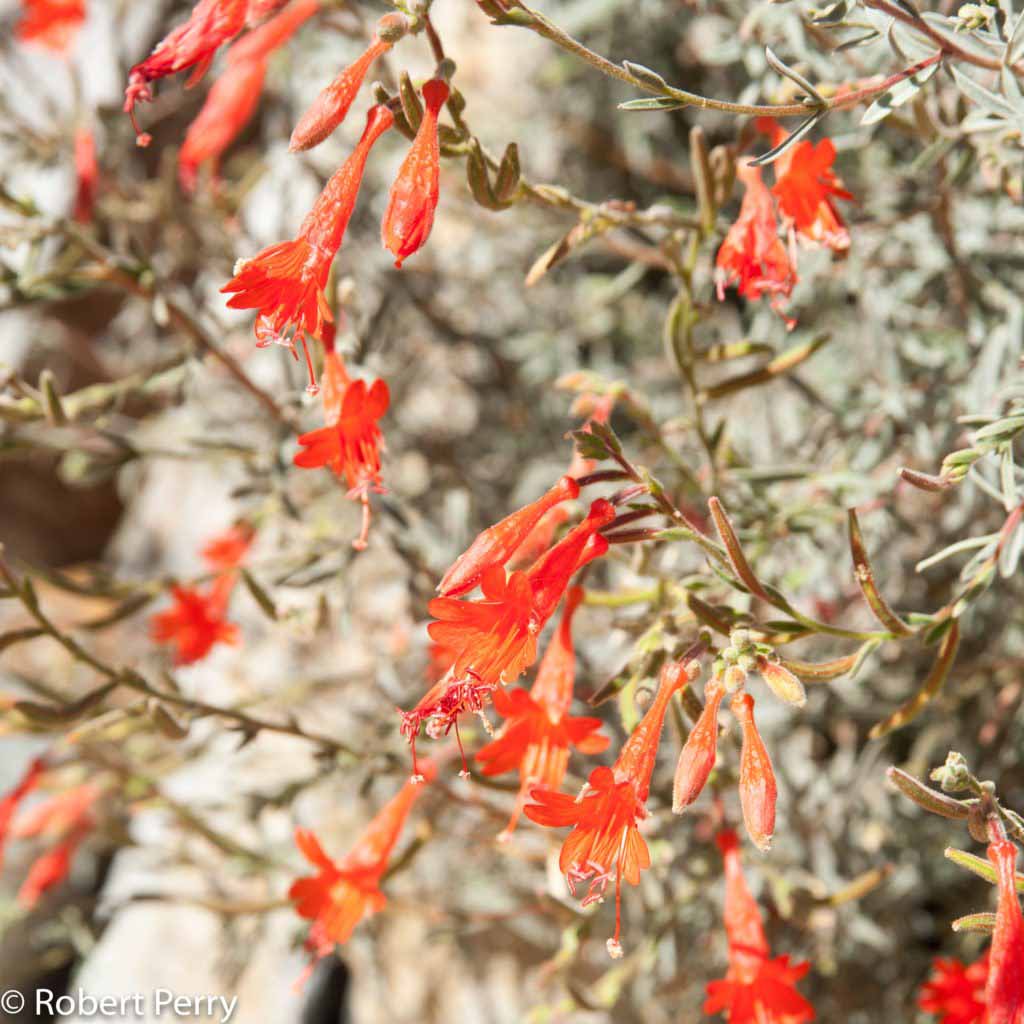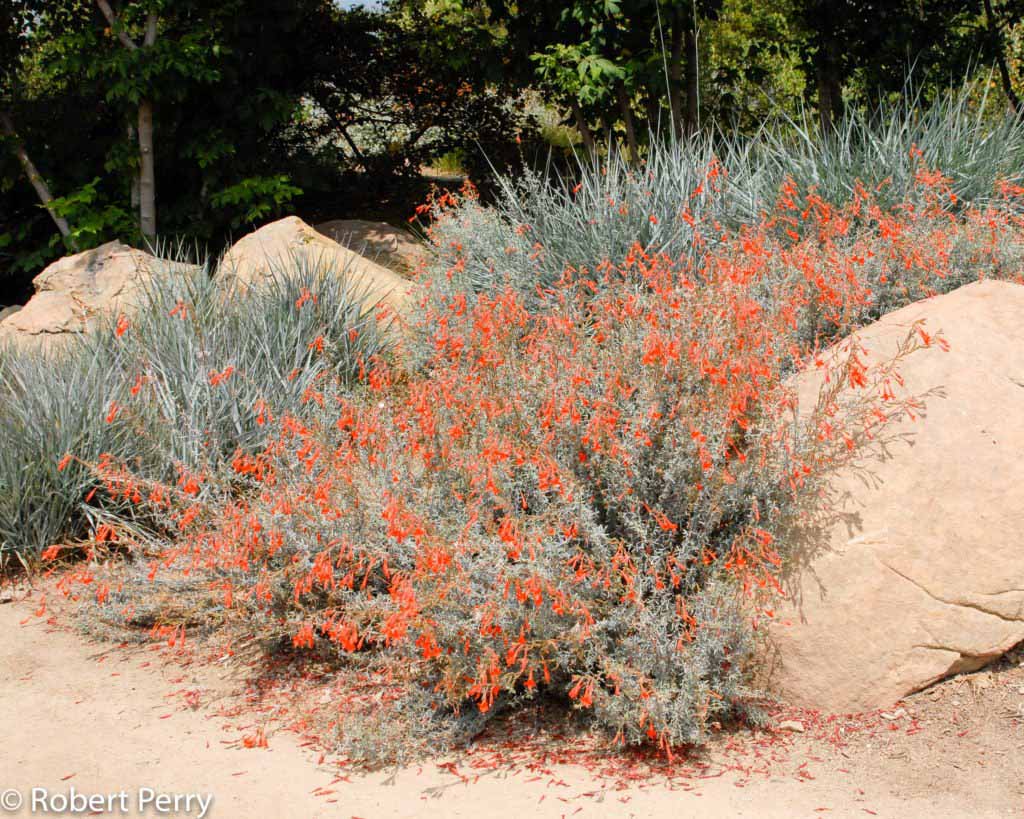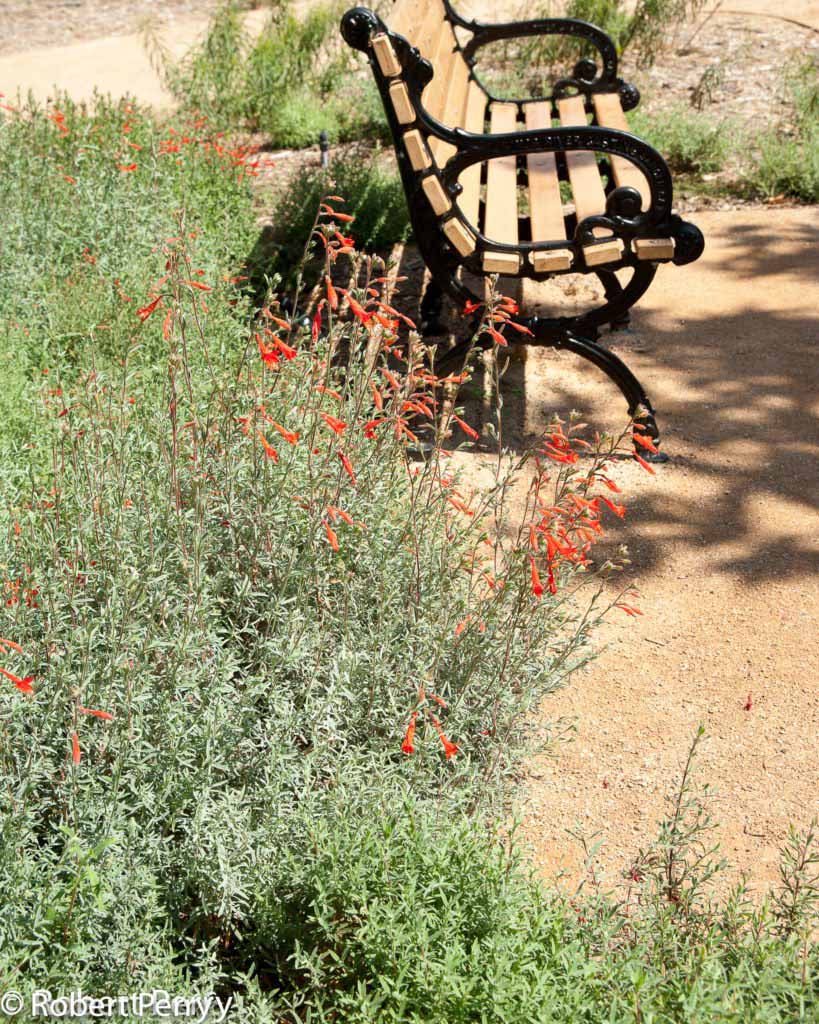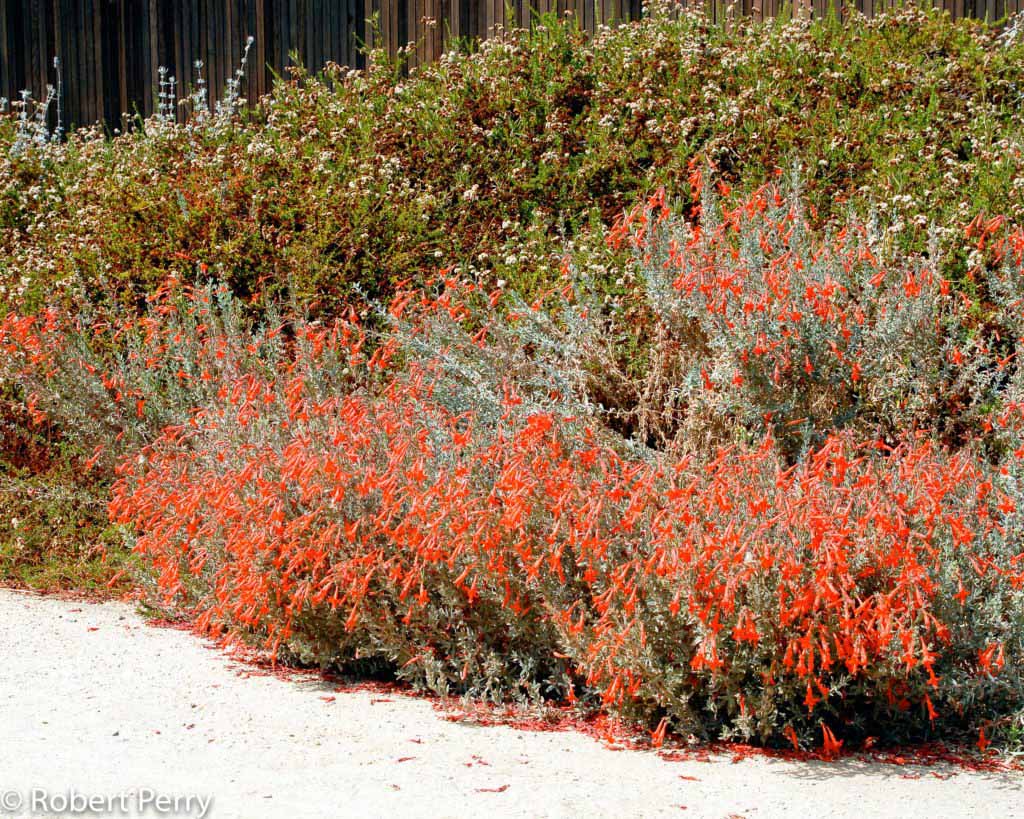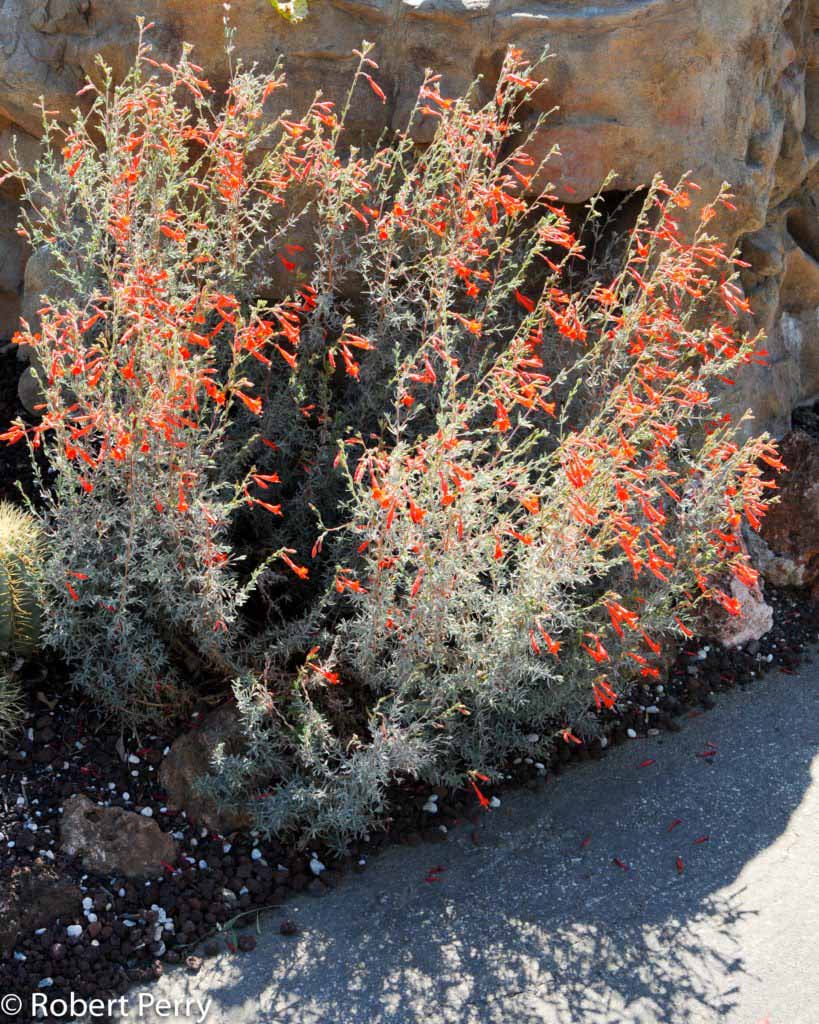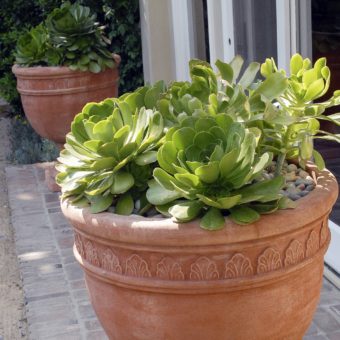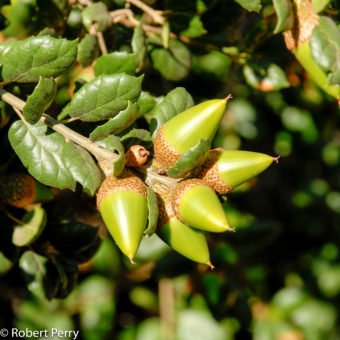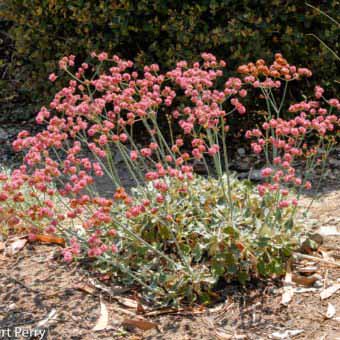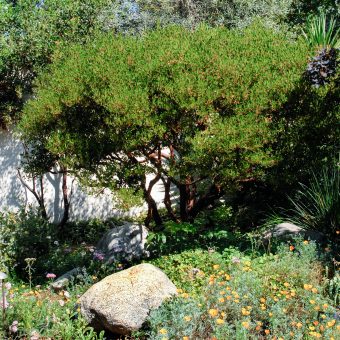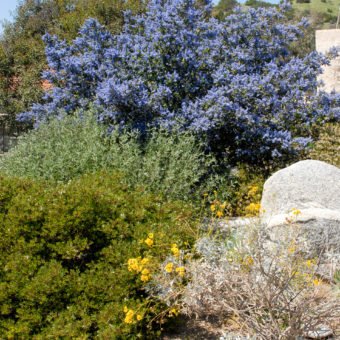The California fuchsia is a low growing perennial plant with striking summertime flowering character. It is native to many dry habitats throughout California, particularly in sage scrub and chaparral environments. Distinctive gray-green leaves are covered with fine hairs; flowers are primarily scarlet to orange-red. Flowering occurs in mid to late summer and continues into fall, which is an important season to provide nectar for hummingbirds. This is a highly popular California native plant, and while a number of cultivars are available from various nurseries, they vary from nursery to nursery and the names are sometimes confused. Plant in sunny locations on well-drained soils and provide little summer water.
California fuchsia
Epilobium canum
Description
Plant properties
Water needs
Maintenance
Plant Type: Perennial, Native
Foliage Character: Evergreen
Habit: Sprawling, Spreading
Growth Rate: Short-lived, Fast
Foliage Color: Pale green
Flower Color: Red, Orange
Flower Season: Summer, Fall
Soil Adaptations: Well-draining soil
Exposure Adaptations: Drought, All day sun
Function: Wildlife value, Rock gardens, Raised planters, Hummingbird plant, Small spaces, Flowering accent plant, Container plant, Borders
Height: 0.5 ft. – 4 ft. (in flower)
Width: 3 ft. – 3 ft. then slowly spreading
Foliage Character: Evergreen
Habit: Sprawling, Spreading
Growth Rate: Short-lived, Fast
Foliage Color: Pale green
Flower Color: Red, Orange
Flower Season: Summer, Fall
Soil Adaptations: Well-draining soil
Exposure Adaptations: Drought, All day sun
Function: Wildlife value, Rock gardens, Raised planters, Hummingbird plant, Small spaces, Flowering accent plant, Container plant, Borders
Height: 0.5 ft. – 4 ft. (in flower)
Width: 3 ft. – 3 ft. then slowly spreading
The California fuchsia easily adapts to warm and sunny climate conditions of the Inland Empire. Established plants grow well with very little and infrequent summer water. The chart shown below provides a recommended baseline guide to the monthly irrigation schedule and volume of supplemental water needed to maintain healthy growth throughout the average year. It should be noted there are several months indicated by an asterisk (*) when winter rains can provide sufficient moisture and irrigation is not needed. The high and low range of moisture indicates it can grow with varying amounts of water; more supplemental water commonly results in a longer flowering season and larger sizes.
Low Water Use Plants – Irrigation Schedule 1
| Jan* | Feb* | Mar* | Apr | May | Jun | Jul | Aug | Sep | Oct | Nov* | Dec* | |
|---|---|---|---|---|---|---|---|---|---|---|---|---|
| Runs per Month | 0x to 2x | 0x to 2x | 0x to 2x | 1x | 1x | 1x | 1x | 1x | 1x | 1x | 0x to 2x | 0x to 2x |
| Inches per Run | 1″ | 1″ | 1″ | 1″ | 1″ | 1″ | 1″ | 1″ | 1″ | 1″ | 1″ | 1″ |
| Inches per Month | 0″ to 2″ | 0″ to 2″ | 0″ to 2″ | 1″ | 1″ | 1″ | 1″ | 1″ | 1″ | 1″ | 0″ to 2″ | 0″ to 2″ |
Range of supplemental summer water: 7"
Range of supplemental winter water: 0"-10"
0″-2″ |
0″-2″ |
0″-2″ |
1″ |
1″ |
1″ |
1″ |
1″ |
1″ |
1″ |
0″-2″ |
0″-2″ |
|
| Jan* | Feb* | Mar* | Apr | May | Jun | Jul | Aug | Sep | Oct | Nov* | Dec* |
For more information on how to use this Irrigation Schedule and Graph, follow this link.
For information how to calculate your irrigation system’s schedule and precipitation rate, please follow this link.
Cut back hard or all the way to the ground, as necessary, once it is looking spent in mid-winter to prepare for fresh Spring growth (1). Can be propagated by division in the Fall (2).
California fuchsia can come up from seeds in other parts of your garden. This may be welcome. If you do not want it to spread from seed, cut back after most flowers fade, but before seed pods develop and dry (S).
Most California fuchsias will slowly spread by rhizomes. If you do not wish plants to spread, pull out spreading stems as they come up. Stems are brittle and pull out easily (S).
References
Sign Up For Free
To access all the features of this website, please create an account with us. Privileges include:
- Ability to print plant groups, lists and plant profiles
- Create your own plant groups
- Receive monthly updates by email
An online resource for you to learn about and choose the best plants for your inland Southern California landscape.
Promoting water conservation through education, stormwater capture, waterwise landscapes, and other initiatives.
We provide programs, services, and resources to serve audiences of all ages to cultivate a community-wide conservation ethic and build regional capacity for water resilience.
